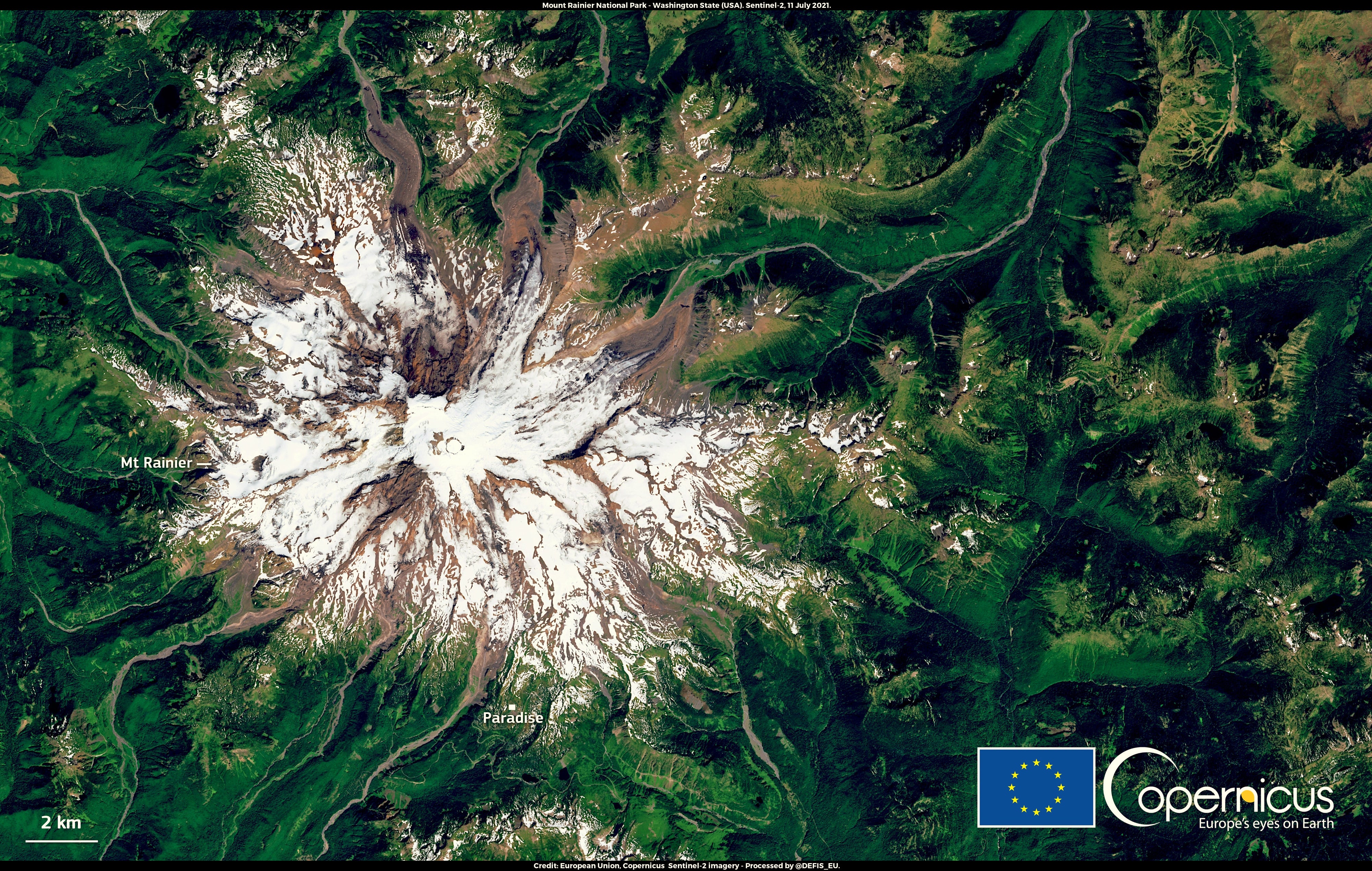Satellite reveals devastating glacier melt on Washington’s Mount Rainier following historic heatwave
Mount Rainier, the iciest peak in the US, lost 30 per cent of its snowpack as a consequence of the heatwave

New satellite images of Mount Rainier in Washington State this week reveal the impact last month’s unprecedented heatwave had on the snowmelt.
A deadly heatwave, exacerbated by the climate crisis, smashed temperature record after temperature record in the US Northwest and Canada over recent weeks.
The extreme heatwave was caused by a “heat dome” of high pressure over the region and left hundreds of people dead.
Mount Rainier is one of America’s most iconic scenes and the largest active stratovolcano in the Cascade range, around 60 miles south of Seattle.
At the end of June, the city broke its previous temperature record from 2009 and hit 108F (42.2C).
Mt Rainier did not escape the impacts of the triple-digit heat. According to scientists at Washington State University, the glaciers in the state have gone through the most severe and rapid melting episode of the last 100 years.
The Northwest Avalanche Center (NWAC) also reported that it took just three weeks from around mid-June for 110 inches of snow to melt at Paradise, an area at around 5,400ft on the south slope.
Mount Rainier, the iciest peak in the United States, lost about 30 per cent of its snowpack as a consequence of the heatwave.
Scientists are also warning that the unusual absence of snow will cause a lengthening and intensification of the fire season across the area.
More than one million acres have burned in 68 large fires and complexes across 12 states in the US West, the National Interagency Fire Center said on Wednesday, including in Washington State.
Hundreds of people in the town of Nespelem, on the Colville Indian Agency towards the north of the state, were under mandatory evacuation due to “imminent and life-threatening” danger as wildfires caused by lightning strikes earlier this year raced through parched vegetation and trees.
Subscribe to Independent Premium to bookmark this article
Want to bookmark your favourite articles and stories to read or reference later? Start your Independent Premium subscription today.

Join our commenting forum
Join thought-provoking conversations, follow other Independent readers and see their replies